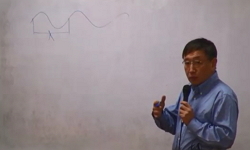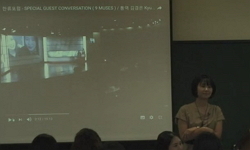The purpose of this study is to examine what is ‘interpretation’ in the education of classic poetry, and what we should keep in mind in order to apply it to the educational curriculum. Recently, the literary education attaches great importance ...
http://chineseinput.net/에서 pinyin(병음)방식으로 중국어를 변환할 수 있습니다.
변환된 중국어를 복사하여 사용하시면 됩니다.
- 中文 을 입력하시려면 zhongwen을 입력하시고 space를누르시면됩니다.
- 北京 을 입력하시려면 beijing을 입력하시고 space를 누르시면 됩니다.
https://www.riss.kr/link?id=A76508875
- 저자
- 발행기관
- 학술지명
- 권호사항
-
발행연도
2009
-
작성언어
Korean
- 주제어
-
등재정보
KCI등재
-
자료형태
학술저널
-
수록면
377-395(19쪽)
- 제공처
- 소장기관
-
0
상세조회 -
0
다운로드
부가정보
다국어 초록 (Multilingual Abstract)
Recently, the literary education attaches great importance to a learner’s cognitive process in the course of reading while it positively considers the interaction between individual learners at the same time. It is admitted that ‘interpretation’ as such is fulfilled at the step following ‘sympathy’ in literary reading.
The status of the education of class poetry comes not from the past but from the present. For this reason, it is important to presentize the past texts, which is, that is to say, the ‘interpretation.’ In order to carry out this task effectively, it is necessary to prepare a process for adjusting the texts to the reader’s level, which in turn appears as the work of translation, annotation etc.
Texts in the literary education should be used in the sense that it covers all the steps that occur just before the reader reaches the feeling or aesthetic responses after he/she has read a work. While the activities occurring here is said to be ‘interpretation,’ all of the educational activities occurring the step of the education of classic poetry should be regarded as activities of ‘interpretation.’
The purpose of this study is to examine what is ‘interpretation’ in the education of classic poetry, and what we should keep in mind in order to apply it to the educational curriculum.
Recently, the literary education attaches great importance to a learner’s cognitive process in the course of reading while it positively considers the interaction between individual learners at the same time. It is admitted that ‘interpretation’ as such is fulfilled at the step following ‘sympathy’ in literary reading.
The status of the education of class poetry comes not from the past but from the present. For this reason, it is important to presentize the past texts, which is, that is to say, the ‘interpretation.’ In order to carry out this task effectively, it is necessary to prepare a process for adjusting the texts to the reader’s level, which in turn appears as the work of translation, annotation etc.
Texts in the literary education should be used in the sense that it covers all the steps that occur just before the reader reaches the feeling or aesthetic responses after he/she has read a work. While the activities occurring here is said to be ‘interpretation,’ all of the educational activities occurring the step of the education of classic poetry should be regarded as activities of ‘interpretation.’
목차 (Table of Contents)
- 1. 서론
- 2. ‘해석’의 해석
- 3. 고전시가 ‘해석’ 교육의 층위
- 4. 고전시가 교육과정에서의 ‘해석’의 위상
- 5. 결론
- 1. 서론
- 2. ‘해석’의 해석
- 3. 고전시가 ‘해석’ 교육의 층위
- 4. 고전시가 교육과정에서의 ‘해석’의 위상
- 5. 결론
- 【참고문헌】
- 【Abstract】
동일학술지(권/호) 다른 논문
-
- 한국비평문학회
- 신진(Shin Jin)
- 2009
- KCI등재
-
- 한국비평문학회
- 김경희(Kim Gyeong-hee)
- 2009
- KCI등재
-
- 한국비평문학회
- 진순애(Jin Soon-ae)
- 2009
- KCI등재
-
국가의 외부와 호모 사케르로서의 디아스포라-현월의〈그늘의 집〉연구
- 한국비평문학회
- 구재진(Koo Jae-jin)
- 2009
- KCI등재





 DBpia
DBpia







